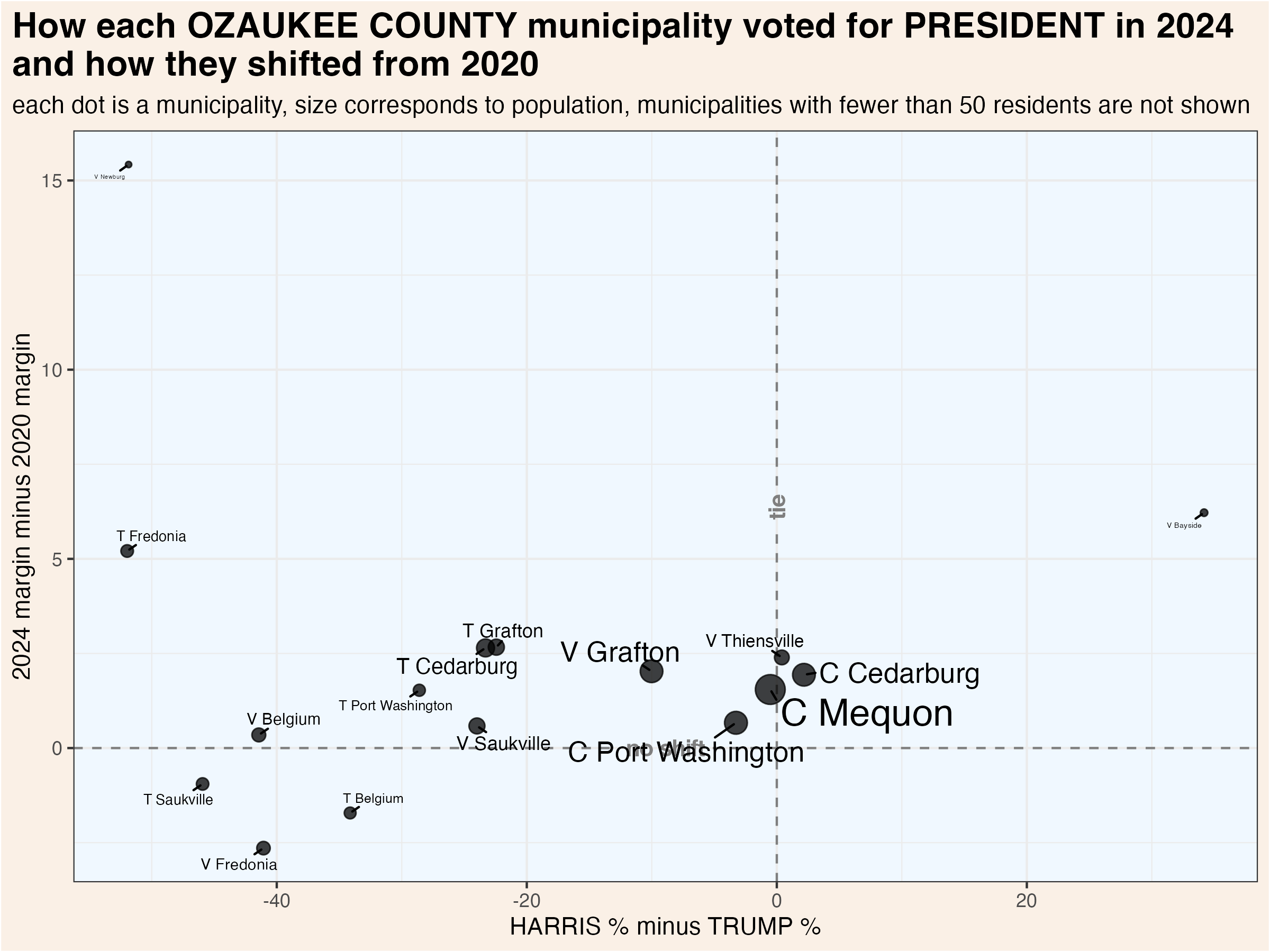
48 Ozaukee
Ozaukee County (pop. 92,000) is located just north of Milwaukee County. Part of the Milwaukee metro, it is one of the suburban “WOW” counties, traditionally the state’s most important Republican stronghold. Ozaukee County, however, while still Republican-leaning, has moved sharply in a Democratic direction since 2016. The county is one of Wisconsin’s most wealthy and highly educated. It has the lowest poverty rate in the state.
48.1 Demographics

48.2 County Election Results

Click each column name to sort its values.
48.3 Municipality Election Results
Ozaukee’s largest municipality is the City of Mequon, followed by Port Washington, Cedarburg, and Grafton. All four of these municipalities gave Clinton a larger share of the vote in 2016 than Obama won in 2012. And they all once again gave Biden a greater share in 2020 than Clinton in 2016, followed by a greater share for Harris in 2024 than Biden in 2020. The more rural towns in the northern part of the county have remained more Republican leaning and have, in some cases, actually shifted in the opposite direction.
This map shows the location of each municipality in the county, as it existed in 2022.

These dot plots show the most recent election results in each municipality.



To more clearly illustrate recent changes in municipality voting trends, these scatterplots compare the most recent vote for president and senator with the shift from that office’s previous election.


These maps show show every election result since 2000 in each municipality.



Click each column name to sort its values.
48.4 Supreme Court Election Results
Wisconsin’s Supreme Court has 7 justices, each of whom are elected to 10 year terms in statewide elections held in April. State law prohibits more than one Supreme Court election from being held in a single year. If a seat becomes vacant, the governor appoints a replacement who serves until the next year in which no court election is already scheduled. If more than two candidates achieve ballot access, a nonpartisan, top-two primary is held in February.
Court elections are formally nonpartisan, but candidates are usually supported by either liberals or conservatives. In recent years, it has become common for the Democratic and Republican parties to endorse and actively campaign on behalf of favored judicial candidates. The liberal and conservative labels indicated in the following graphs and tables are based on widely recognized tendencies, not any formal affiliation.
48.4.1 County Election Results
This graphic compares how presidential, gubernatorial, and court elections have trended over the past quarter century. Click the “Table” tab to see detailed results for the Supreme Court races.

48.4.2 Municipality Election Results
The following table shows the results of each Supreme Court election by municipality. The graphic visualizes the shifts over the past three court elections.
